JHP Newsletter - 2017, No. 2, 17 April
Greetings from Idaho Falls, Idaho.
Jan and I have finished our stay in South Africa where we spent almost seven weeks.
Travel: South Africa
Kgalagadi Transfrontier Park
We started our stay at the end of February with nine nights in Kgalagadi Transfrontier Park which encompasses the former Kalahari Gemsbok National Park. The area had received a lot of rain before we arrived so there were lots of wildflowers and fresh green vegetation. While the wildflowers were great for photography, the fresh green vegetation made it easier for the wildlife to stay away from the waterholes so there weren't as many good photo ops.
We stopped to photograph some Swallow-Tailed Bee-Eater (Merops hirundineus) one afternoon that were hunting from a nice perch, and we were thrilled when an adult brought back its catch to feed its young (below left). We photographed Cape Ground Squirrel (Xerus inauris) among yellow flowers several times, and in this image you can see how they use their tails to shield their bodies from the sun (below right).
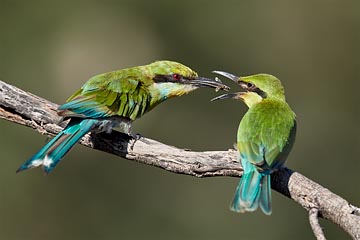
1/1000 sec, f8, ISO 800
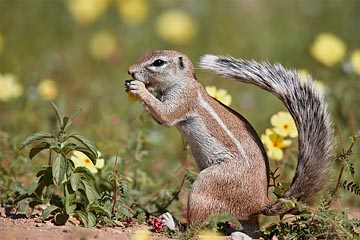
1/1500 sec, f5.6, ISO 160
We had many Black-Backed Jackal or Silver-Backed Jackal (Canis mesomelas) sightings, and this youngster came right up to us one morning while it was still wet from the dew (below left). The absolute best photo op almost didn't happen. Jan sits in the back of the vehicle behind me so that we can both shoot, but it also means that I have a much better view of the surroundings. Well, as I was driving down the road and scanning the area ahead, Jan yelled out, "Stop! There's a leopard near the road." Somehow it had escaped my scan and we had gone by it. Fortunately, the Leopard (Panthera pardus) stayed by the road while we turned around and then he moved off a comfortable distance as he continued heading to the nearest waterhole. After he drank, he continued paralleling the road before eventually coming up to the road and crossing it. My favorite image of the fantastic encounter is this one that highlights his wonderful curved tail (below right).
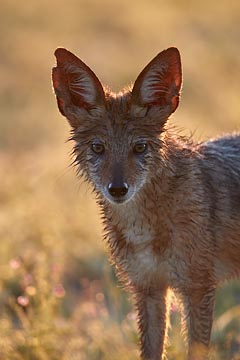
1/250 sec, f8, ISO 800
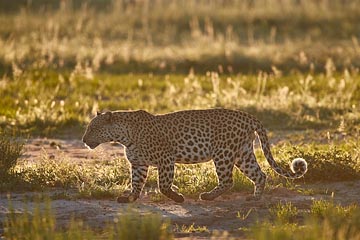
1/1500 sec, f5.6, ISO 1000
Gannabos
Our next stop, in early March, was two nights at the Quiver Tree or Kokerboom (Aloe dichotoma) forest at Gannabos near Nieuwoudtville in Namakwa. We had photographed quiver trees before near Springbok, but there they are scattered and (nicely) isolated. I learned about this quiver tree forest last August while staying at Namaqua National Park and made an exploratory visit during the middle of the day. That short visit made me want to come back for an extended time with multiple sunrise and sunset shooting opportunities. So, on this trip, we stayed at the wonderful Brandkop Guest Farm cottage overlooking the quiver tree forest for two nights. It's in an old dam-keeper's house out in the boonies with no cell reception or electricity except for the solar-powered LED lights. It was a great place to really disconnect from the grid for a while and live the simple life of iPhones for reading Kindle books and MacBook Pros for editing images, both powered by external battery packs. :)
The sky was completely clear the whole time we were there, so my favorite way of isolating a tree by having it located on the horizon wasn't very interesting. The next best way I found to isolate the trees was to find a bare area of hillside to put behind the trees like I did below-left. I also filled the sky with tree branches, and the image below-center is an example of that. I made several close up, and semi-abstract images of the leaf patterns, and the one below-right is my favorite.
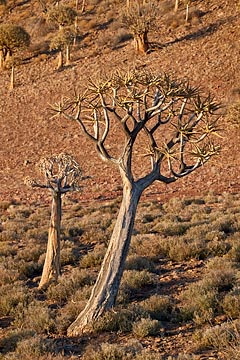
1/20 sec, f11, ISO 100
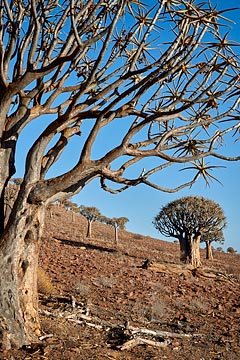
1/45 sec, f16, ISO 100
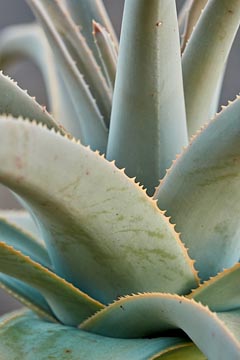
1/2 sec, f13, ISO 100
Lambert's Bay and Simon's Town
We spent two nights in early March at Lambert's Bay, mainly to photograph the Cape Gannet (Morus capensis) colony at nearby Bird Island. There were many opportunities for flight shots, but only a couple of opportunities for good landing shots like this one below-left. Several pair were performing their courtship ritual which involves necking (below right).
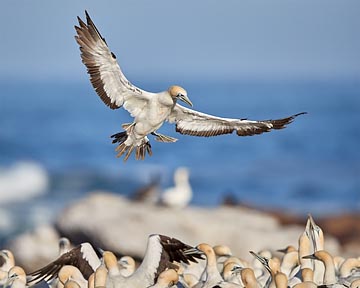
1/2000 sec, f4, ISO 200
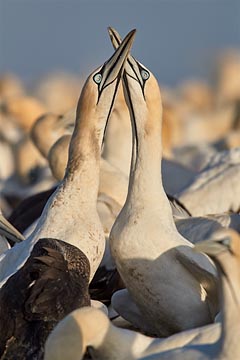
1/2000 sec, f8, ISO 500
Then we spent three nights in early March in Simon's Town to photograph African Penguin (Spheniscus demersus) and have a short "vacation" at the wonderful lodge right near the penguin colony. It was extremely windy on three out of the four days, so we only photographed the penguins on one afternoon and one day. This guy (below left) was walking down the shared human/penguin path from its burrow on its way to the beach. We saw several pairs mating, and this pair was doing it in a nice location with wonderful, warm, afternoon light (below right).
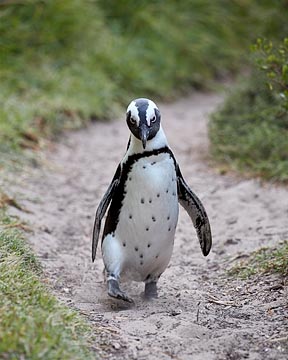
1/350 sec, f5.6, ISO 800
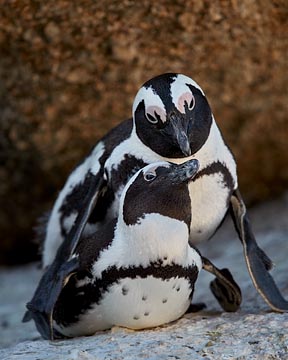
1/500 sec, f5.6, ISO 1000
Addo Elephant National Park
We spent three nights in mid March in Addo Elephant National Park. It’s a great place to see and photograph African Elephant (Loxodonta africana), and this visit was special because I've never seen so many young baby elephants in the park before. This is one of a dozen or so about this age, and I just love it when they run with joy with their ears out (below left). The park is also usually good for cats, and our stay started off with a bang when we watched a pair of Lioness (Panthera leo) on our first morning trying to take down a Cape Buffalo in a small herd. They were unsuccessful, but the hunt occurred close to the road in wonderful diffuse light and it was nice to get some actions shots (below right).
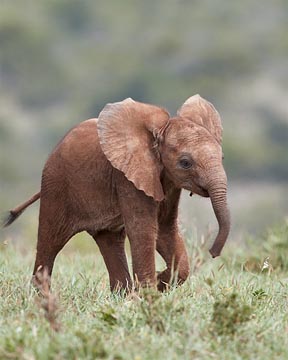
1/500 sec, f8, ISO 500
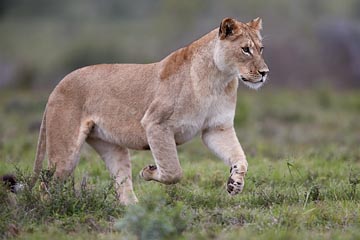
1/1000 sec, f5.6, ISO 1250
The most unusual sighting was this Leopard Tortoise (Geochelone pardalis) male trying to mate with a female (below left). It might properly be called sexual assault of a minor because she was quite a bit younger than he was and didn't seem very interested in his advances. The Red Hartebeest (Alcelaphus buselaphus) population appeared to be exploding, and there were many calves to photograph, like this one with its mother (below right).
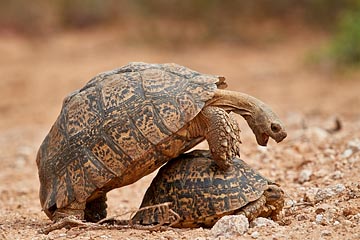
1/750 sec, f8, ISO 400
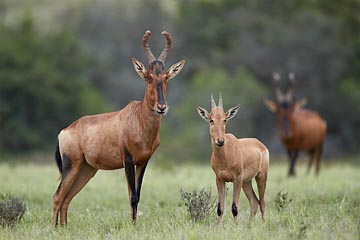
1/750 sec, f5.6, ISO 800
Mountain Zebra National Park
We spent three nights in mid March in Mountain Zebra National Park. The herbivore populations were way down and shooting was slow. However, we did get some nice photo ops, including a great time with a pair of Black Rhinoceros (Diceros bicornis) one morning. I had heard reports of them in the park many years ago, but had never seen one there, so it was a very special encounter. They were close to the road when we found them and didn't move too far off before first light illuminated them (below left). We had a lot of fun photographing a group of about fifty Vervet Monkey (Chlorocebus aethiops) late one afternoon, and these two youngsters posed nicely on a downed tree trunk (below right).
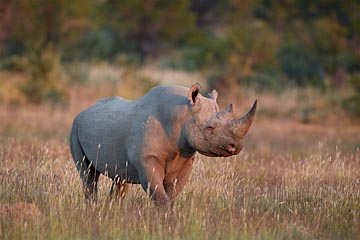
1/180 sec, f5.6, ISO 800
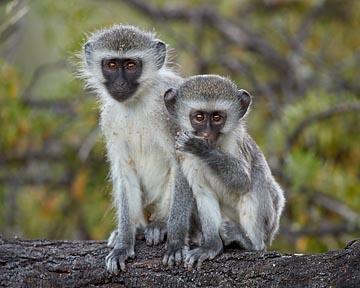
1/90 sec, f5.6, ISO 1600
The park is named after the Cape Mountain Zebra (Equus zebra zebra), and we photographed several foals including these two near a waterhole (below left). We had several opportunities to photograph animals while running, and my favorite image is of this Black Wildebeest (Connochaetes gnou) made with a slow shutter speed to give a sense of motion (below right).
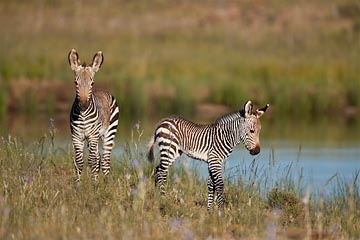
1/1500 sec, f5.6, ISO 200
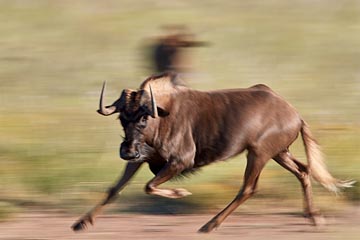
1/30 sec, f13, ISO 100
Kruger National Park
We ended our stay with 17 nights in Kruger National Park beginning in late March. The park was hit by a severe drought last year and the animal populations have suffered. The giraffe and elephant populations appeared healthy though, so we photographed them a lot. We saw quite a few rhino. Most were White Rhinoceros (Ceratotherium simum), which are fairly common in the southern part of the park, but three were Black Rhinoceros (Diceros bicornis) which are not very common. Unfortunately, the two shootable black rhino both had ugly scars on their chests.
We had a blast one morning following a group of Chacma Baboon (Papio ursinus) as they worked their way along the road. This mother and infant paused nicely on a low branch in the warm light (below left). We didn’t have many cat encounters, but the first was a good one: a very cooperative male Lion (Panthera leo) cub coming down the road towards us (below center). A few days later, we spent about an hour with two male lions near the road. They roared several times which was fun to experience. It was especially exciting after they started to make their way down the road towards us and paused to roar (below right)!
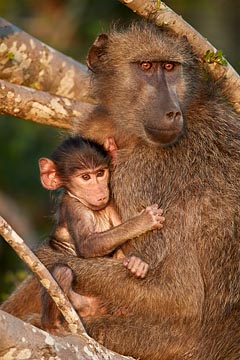
1/1000 sec, f5.6, ISO 1000
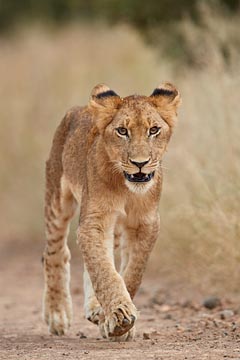
1/750 sec, f5.6, ISO 400
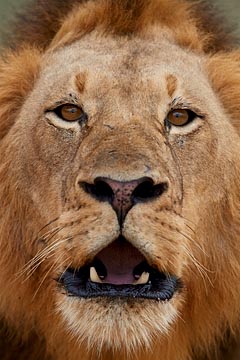
1/1000 sec, f5.6, ISO 800
Another good cat encounter was with four older male cubs that were likely recently kicked out by their mother. They were hunting an elephant mother and roughly five-year old offspring, and it was amusing to see them with such big plans. As soon as the mother elephant saw the lions, she chased them off. This cub posed nicely before leaving to look for other prey (below left). After photographing this group of African Elephant (Loxodonta africana) drinking on the far side of the river, they crossed the river which was a much more interesting opportunity for me (below right).
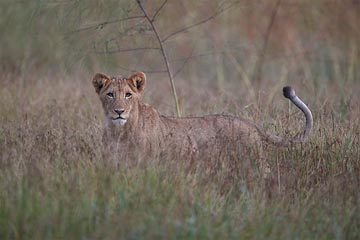
1/350 sec, f5.6, ISO 800
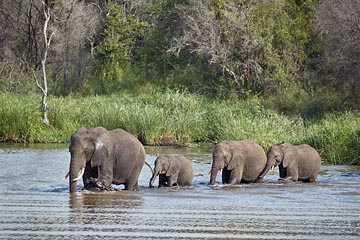
1/350 sec, f8, ISO 250
One of the most exciting photo ops for me was this Roan Antelope (Hippotragus equinus) buck heading to a waterhole (below left). I’ve had brief views of roan antelope before, but this was the first time I was able to photograph one. We had a nice time photographing this pair of Impala (Aepyceros melampus) bucks sparring for an extended time in a nice location with diffuse light (below right).
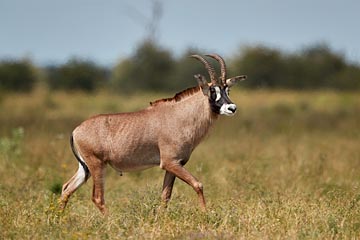
1/3000 sec, f5.6, ISO 500
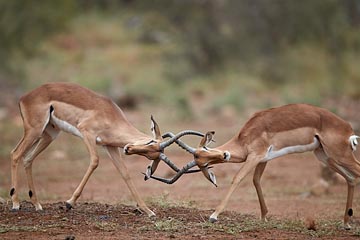
1/2000 sec, f4, ISO 400
We visited the Biyamity Dam several times. It's one of my favorite locations for photography in the park because the dam is low and there's a causeway immediately downstream so that the water level above the dam is less than a foot below a car's windowsill. This Hamerkop (Scopus umbretta) was very cooperative, and in this image it's flipping some potential food (below left). I was getting our vehicle in position at another location to photograph a different subject when I saw this Three-Banded Plover (Charadrius tricollaris) pair start to mate on the other side of the vehicle. There was no time to turn the vehicle around and shoot out of our regular windows, so I placed the hood of my 600mm lens on the opposite window sill and shot before the action stopped.
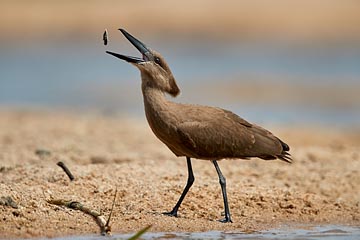
1/2000 sec, f8, ISO 800
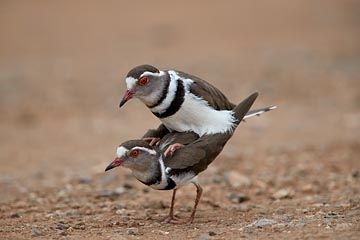
1/2000 sec, f5.6, ISO 500
We saw several Cape Giraffe (Giraffa camelopardalis giraffa) babies that were about a week old, and this one posed nicely with its mother (below left). I enjoyed photographing this tight group of Chapman's Zebra or Plains Zebra (Equus quagga chapmani) where I made this somewhat abstract image (below center). We had a blast photographing this days-old African Elephant (Loxodonta africana) calf on our last morning to end the visit on an up note. The mother was fairly relaxed even though she was still bleeding and it appeared that she was still trying to expel the placenta. The calf was still a bit wobbly on his feet, and he didn't really understand where to go to nurse. In this image, he finally tried at the correct end of his mother, but was on the wrong side of her front leg (below right).
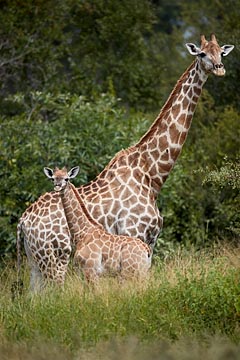
1/2000 sec, f4, ISO 200
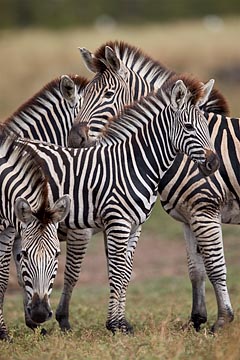
1/500 sec, f5.6, ISO 200
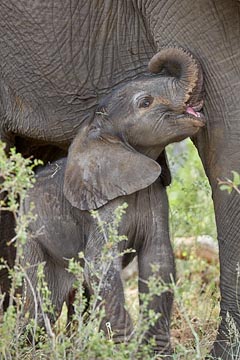
1/250 sec, f6.7, ISO 800
Take care and happy shooting.
— James
James Hager Photography :: www.jameshagerphoto.com




